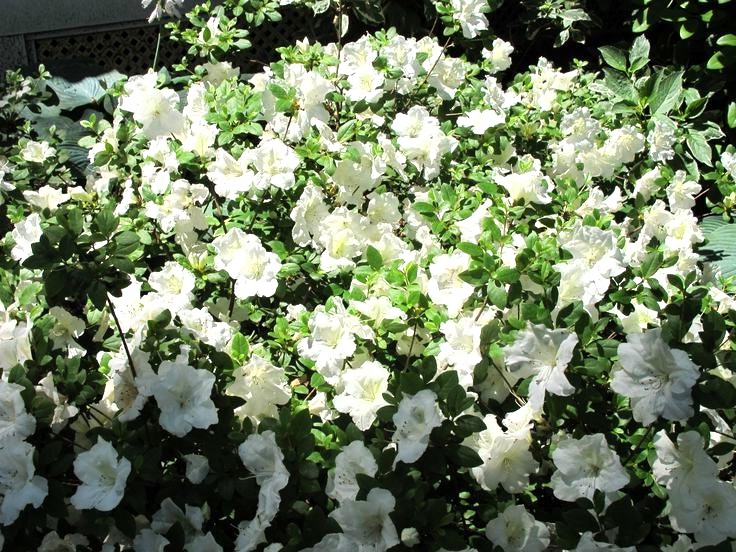When it comes to naming plants, botanists often turn to Latin classifications to ensure accuracy and avoid confusion. However, plant lovers and horticulturists have developed a trend of giving plants common names, often drawn from people’s names, places, or even whimsical ideas. Among these, one name that seems to come up in curiosity is “Hayden.” So, is there actually a plant called “Hayden,” or is this just a popular inquiry among garden enthusiasts? Let’s dive into the world of plant naming, explore unique varieties with similar characteristics, and see where the name “Hayden” might fit in.
Plant Naming Traditions: Latin Roots and Common Names
To understand whether “Hayden” might be a name for a plant, it’s helpful to know how plant names are typically chosen. Scientific plant names (binomial nomenclature) are often based on the plant’s genus and species and are written in Latin. This practice began with the Swedish botanist Carl Linnaeus in the 18th century, who sought to create a universal system to identify plants. By using Latin, botanists and scientists can maintain consistency across languages and regions.
Common names, however, are often easier to remember and more fun for the average gardener. These names can be based on the plant’s appearance, origin, folklore, or even named after a person. In some cases, plants are named to honor botanists, royalty, or significant contributors to the plant world. But the real question remains—has any plant been named “Hayden”?
Searching for “Hayden” in the Plant World
After examining common plant names, scientific literature, and plant databases, it appears that no plant is officially classified or commonly known by the name “Hayden.” Unlike popular names such as “Jade” (Crassula ovata, often called the Jade plant) or “Lily” (representing many plants in the Liliaceae family), “Hayden” doesn’t appear to be linked to any particular plant species.
While “Hayden” hasn’t yet been documented as a botanical or widely recognized common plant name, that doesn’t mean it couldn’t be used for a new cultivar, especially as unique plant naming has become more popular in recent years. The names chosen by breeders and gardeners often reflect trends, personalities, and even emotions associated with the plant.
Plants Named After People and Places: A Few Examples
Plant names inspired by people and places aren’t uncommon. Let’s look at a few examples of how names are chosen, which might inspire the future naming of a plant called “Hayden”:
- Fuchsia ‘Gartenmeister Bonstedt’ – This Fuchsia variety was named in honor of a famous gardener, reflecting the impact of influential horticulturists.
- Hoya ‘Mathilde’ – This popular indoor plant cultivar has a human name, demonstrating how houseplants can take on personal names that make them memorable.
- Dahlia ‘Bishop of Llandaff’ – Named after a Welsh bishop, this dahlia showcases how religious figures or public personalities may influence naming.
- Philodendron ‘Prince of Orange’ – While this name might sound like royalty, it highlights the creative freedom plant breeders often have when naming new cultivars.
- Stachys ‘Hummelo’ – Named after the Dutch village where it was developed, showing that locations, too, can inspire plant names.
Naming plants after people or places can add a personal touch, making plants feel like part of a story. If “Hayden” were to be used for a plant, it would join a line of named cultivars that resonate with gardeners on a personal level.
Speculating What Type of Plant “Hayden” Could Be
If a plant were to be named “Hayden,” what kind of plant might suit the name? Here are a few possibilities based on popular plant types and their characteristics:
- Ornamental Grasses: Grasses are often named after people, like the “Karl Foerster” grass. “Hayden” would make a fitting name for an ornamental grass that brings subtle charm and movement to a landscape.
- Succulents: Succulents have gained massive popularity for their easy care and unique looks. A succulent named “Hayden” could be a small, low-maintenance variety, appreciated for its compact, sturdy nature.
- Flowering Shrubs: A flowering shrub, such as a rose or hydrangea, could easily bear the name “Hayden.” Roses are often named after people to honor them or as tributes, so a rose named “Hayden” could symbolize beauty and resilience.
- Houseplants: Houseplants with person-inspired names have been trending. “Hayden” might be a new variety of Philodendron or Monstera, giving indoor gardeners a unique addition with a memorable name.
Understanding Plant Cultivars and the Future of Plant Naming
With the surge of plant enthusiasts over recent years, particularly in the houseplant and gardening community, there has been an explosion of new plant cultivars. Breeders often name these cultivars based on the plant’s unique traits, and occasionally, breeders will honor people or evoke certain emotions through these names.
Some plant breeders could even be inspired by a name like “Hayden” in the future, given the trend in more personalized plant names. If a new plant with appealing features were discovered or developed, it’s not far-fetched to imagine it could receive the name “Hayden.” The plant world is open to innovation and often embraces new names that connect with people’s emotions or personalities.
The Significance of Plant Names in the Gardening World
Names like “Hayden” aren’t just labels; they could carry symbolic meanings that add a layer of appeal to the plant. Plant names help create an emotional connection, making them memorable and easy to talk about. When gardeners discuss their plants, a name like “Hayden” would naturally feel personal and inviting.
Plant names are also part of the broader gardening community’s culture. From sharing tips on caring for specific varieties to discussing which plants work well together, names allow gardeners to identify and share experiences more easily. A plant named “Hayden” could evoke specific emotions or ideas, especially if it embodies resilience, beauty, or adaptability, traits that many gardeners appreciate.
Plant Naming Conventions: Rules and Creativity
Botanical names follow strict guidelines set by the International Code of Nomenclature for algae, fungi, and plants (ICN). However, for common names and cultivars, there is far more freedom. Breeders often create names that appeal to emotions, aesthetics, or trends in society.
For example, popular cultivars of roses have been named after royals, celebrities, and beloved fictional characters, while succulents and houseplants are often named to evoke thoughts of adventure or tranquility. “Hayden” could very well fit into this creative space, and as new cultivars emerge, a breeder might find the name fitting for a plant with special characteristics.
Final Thoughts: Will We Ever See a “Hayden” Plant?
While there isn’t currently a plant officially named “Hayden,” the possibility remains open in the future. As breeders continue to develop new cultivars and gardeners seek unique plants with memorable names, “Hayden” could become a reality in the plant world.
Whether it’s an ornamental grass, a flowering shrub, or a popular indoor plant, “Hayden” could serve as a wonderful addition to a gardener’s collection, carrying with it a story and a sense of character. Plant names have an impact on how people perceive and appreciate their greenery, and a plant named “Hayden” would surely capture imaginations and possibly inspire future plant collectors.
In the meantime, even if there isn’t a “Hayden” plant today, the gardening world offers endless possibilities. If you’re drawn to the name, why not assign it to a favorite plant in your collection as a personal homage? Gardening is, after all, about connection and expression—qualities that make every plant, no matter its name, uniquely special.

